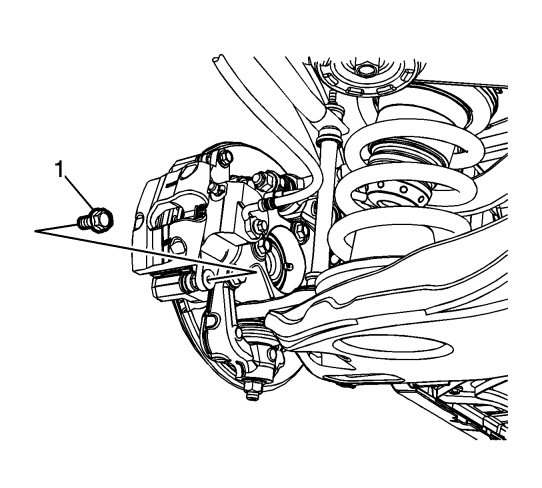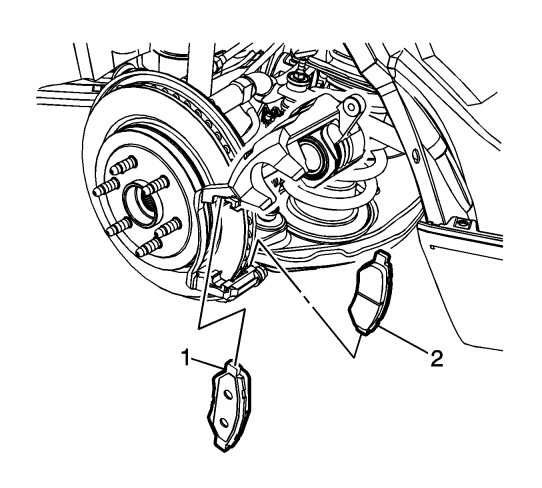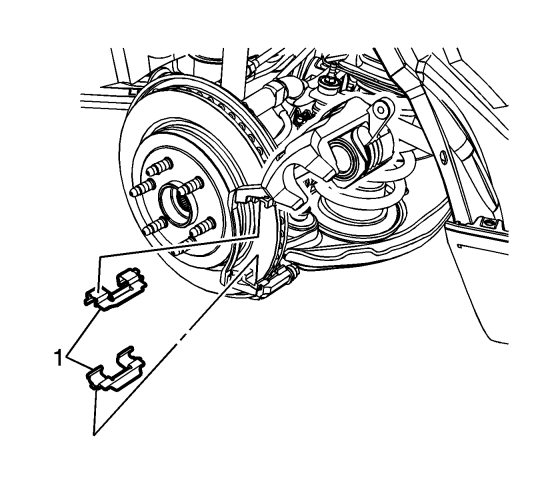Rear Disc Brake Pads Replacement
|
|
Rear Disc Brake Pads Replacement
|
Refer to
Brake Dust Warning
.
|
1.
|
Inspect the fluid level in the brake master cylinder reservoir.
|
|
2.
|
If the brake fluid level is midway between the maximum full point and the minimum allowable level, no brake fluid needs to be removed from the reservoir before proceeding.
|
|
3.
|
If the brake fluid level is higher than midway between the maximum full point and the minimum allowable level, remove brake fluid to the midway point before proceeding.
|
|
7.
|
Install a C-clamp against the outer brake pad and the rear of the brake caliper body.
|
|
8.
|
Slowly tighten the C-clamp until the brake caliper piston is compressed into the brake caliper bore.
|
|
9.
|
|
Note
|
|
•
|
DO NOT use any air tools to remove or install the guide pin bolts. Use hand tools ONLY.
|
|
•
|
Install an open end wrench to hold the caliper guide pin in line with the brake caliper while removing or installing the caliper guide pin bolt. DO NOT allow the open end wrench to come in contact with the brake caliper. Allowing the open end wrench to come in contact with the brake caliper will cause a pulsation when the brakes are applied.
|
Using a backup wrench to hold the brake caliper guide pin stationary, remove the lower brake caliper guide pin bolt (1).

|
|
10.
|
 Warning
Warning
|
|
Support the brake caliper with a strong metal wire, or equivalent. This applies whenever the caliper is separated from its mount and the hydraulic flexible brake hose is still connected. Failure to support the caliper in this manner will cause the flexible brake hose to bear the weight of the caliper, which may cause damage to the brake hose and in turn may cause a brake fluid leak.
|
|
|
|
|
|
Pivot the brake caliper upward and support with heavy mechanics wire or equivalent.
|
|
11.
|
Remove the outer brake pad (1).

|
|
12.
|
Remove the inner brake pad (2).
|
|
13.
|
Remove the brake pad springs (1).

|
|
14.
|
If installing new brake pads, discard the brake pad springs.
|
|
1.
|
|
Note
|
|
If installing new brake pads, install new brake pad springs.
|
Install the brake pad springs (1).

|
|
2.
|
Install the outer brake pad (1).

|
|
3.
|
Install the inner brake pad (2).
|
|
4.
|
Rotate the brake caliper into position.
|
|
5.
|
Refer to
Fastener Caution
.
Using a backup wrench to hold the brake caliper guide pin stationary, install the brake caliper guide pin bolt (1) and tighten to
60 Nm (44 lb ft)
.

|
|
7.
|
With the engine OFF, gradually apply the brake pedal to approximately 2/3 of its travel distance.
|
|
8.
|
Slowly release the brake pedal.
|
|
9.
|
Wait 15 seconds, then repeat steps 7-8 until a firm brake pedal apply is obtained. This will properly seat the brake caliper pistons and brake pads.
|






 Warning
Warning

